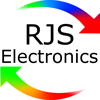Navigating the World of Push Buttons Switches: A Comprehensive Guide to the Basics!
In the realm of electronics, the humble push button switch plays a critical role in enabling user interaction with various devices. Understanding the basics of push buttons, including their functions, types, and applications, is essential for both electronics enthusiasts and professionals. In this blog post, we delve into the technical aspects of push button switches to provide a comprehensive guide for enthusiasts and beginners alike.
Understanding Push Buttons
Push button switches are tactile switches that are activated by applying pressure to their actuator mechanism. They come in various designs and configurations, offering different functionalities based on the application requirements. One fundamental classification of push button switches is based on their switching action: push to make (normally open) and push to break (normally closed).
Push to Make (Normally Open): In a push to make switch, the contacts are open when the button is at rest. Pressing the button closes the contacts momentarily to complete the circuit.
Push to Break (Normally Closed): Conversely, a push to break switch has its contacts closed in the resting state. When the button is pressed, the contacts open to interrupt the circuit.

Switch Functions and Types
Push button switches can have various functions and configurations to suit different applications. Some common functions include:
Momentary: These switches return to their original state once the actuation force is removed.
Latching: Latching switches maintain their position after being actuated until pressed again to change state.
10 Different types of Switches
LED Illumination Explained
In the realm of push button switches, LED illuminated switches stand out as a beacon of both functionality and aesthetics. These switches not only offer tactile feedback and reliable actuation but also provide visual feedback through integrated LEDs. The illumination options are diverse, catering to a spectrum of applications and design preferences. Let’s illuminate the world of LED illuminated switches and explore the different types of illumination, display variations, and the impact of operating voltages.
1. Types of Illumination
RGB Illumination: RGB LED illuminated switches are equipped with red, green, and blue LEDs, allowing for a wide range of colours to be displayed. This versatility enables dynamic visual feedback and customisation options to suit specific branding or user interface requirements.
Bi-Colour Illumination: Bi-colour LEDs, featuring dual-colour diodes, offer the flexibility to display two distinct colours, often red and green. This can be leveraged for status indication or polarity display in applications.
Single Colour Illumination: Single colour LED switches come in various colours such as red, green, blue, yellow, and white – each conveying specific meanings or aesthetic preferences based on the application context.
2. Display Variations
LED illuminated switches offer diverse display configurations to accommodate different visual requirements:
Dot Display: In dot illuminated switches, a single LED or multiple LEDs are arranged in a circular pattern to form a visual indicator, providing a clear and focused illumination point.
Ring Display: Ring illuminated switches feature LEDs arranged in a ring shape around the actuator, offering uniform illumination and a visually striking appearance.
Custom Symbol LED: Some switches can incorporate custom symbols or logos through LED illumination, allowing for personalised branding or unique interface designs.
3. Operating Voltages and Impact on Switches
The operating voltage of LED illuminated switches plays a crucial role in defining their performance and compatibility with various electrical systems:
Low Voltage (e.g., 3V, 5V): Lower voltage switches are suitable for portable devices, IoT applications, and low-power circuits, offering energy efficiency and compatibility with battery-powered systems.
Standard Voltage (e.g., 12V, 24V): Standard voltage switches cater to a wide range of industrial and automotive applications, striking a balance between power consumption and robust illumination.
High Voltage (e.g., 110V, 220V): High voltage LED switches are designed for mains-powered equipment, providing bright and conspicuous illumination for applications where visibility is paramount.
It is crucial to select LED illuminated switches with operating voltages that align with the electrical specifications of the intended application, ensuring optimal performance and safety.
Ring Illumination
Dot Illumination
Full Illumination
Custom Illumination
Understanding IP Ratings in Switch Basics
For applications exposed to challenging environments, understanding IP ratings (Ingress Protection) is paramount. IP ratings denote the level of protection a switch offers against solid and liquid ingress, guiding users in selecting the appropriate switch for their needs. The IP rating consists of two digits, the first indicating protection against solids and the second against liquids. For instance, a switch with an IP67 rating ensures complete dust protection (6) and resistance against temporary immersion in water (7). IP ratings are important for the user to make informed decisions to safeguard their switches and ensure optimal performance in diverse operating conditions.
Final Words
In conclusion, understanding the fundamentals of push button switches is crucial for anyone working with electronic devices. Whether you are a hobbyist tinkering with projects or a professional designing intricate systems, grasping the intricacies of switch basics will empower you to make informed decisions and optimise the functionality of your electronic creations.
Have any questions or want to learn more about push button switches? Feel free to contact us for expert guidance and support.
Interested in our products? Speak to us today!
How to place an order?
We operate Monday – Thursday (8 am – 5 pm) and Fridays (8 am – 4.30 pm)
Call us on +44 (0) 1234 213600 to speak to our Sales Engineers or e-mail us
on [email protected] alternatively, leave us a message using our online contact form.
View our full product range here | Download our recent product catalogue
Switch on.
Sign up to our mailing list for the latest news, product notification and so much more!
Just one click away…

